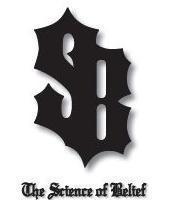|

|


| |||||||||||||||||||||||||||||||||||||||||||||||
| Overview |
|
Many Truths ... One Church
 The Church of Belief Science represents a new beginning for the post modern era and beyond. The following paragraphs provide an introduction to the ideas represented by this religion. The Creed of the Church of Belief Science
(This Creed is recited regularly by members of the Church) "We believe and pledge to live by and uphold the Canons of the Church of Belief Science. We believe in love, in living life to its fullest, and in caring for those in need. We act to prevent evil in the form of disease, aggressive harmful acts, harm to children, and barriers to free religious expression. We are a community that shares ideas and the fruits of the land. We believe in social and environmental harmony. We come together in communion to rejoice in the good acts that come from our faith. We value understanding through many ways of believing. But most of all, we believe that faith comes from sharing our most profound understanding or our experiences together. By this pledge, we unite as a community of faith." Understanding Cottone's Postmodern Concept of "Bracketed Absolute Truths" (Consensualities): A Dialogue Between a Student of Belief Science and Her Teacher Student: "Teacher, I am having difficulty with the concept of 'bracketed absolute truths,' which is a concept at the foundation of Belief Science. How can there be limits to absolute truth?" Teacher: "In postmodernism everything is viewed within its relational context, even claims to truth. So a truth claim is always made by people situated within some social, cultural, and historical context." Student: "Well if that is true, how can it be absolute? Isn't it relative to social context?" Teacher: "From the outside looking at a group's truth claim, it does appear relative. But ... and this is important ... from within a group, the truth claim is viewed as absolute. An absolute is an unquestioned statement of fact; it is indisputable. So, outsiders view it as relative to the group. Insiders view it as an indisputable standard to live by. The fact that people will go to their deaths in defense of a truth claim makes it clear that within the group the truth claim is held as unquestionable. It is a truth held as absolute within the brackets (bounded context) of their social interaction. When people die for a cause it is reflective of action consistent with a socially defined and/or culturally held belief that holds special status to the believer." Student: "So does that mean it is a universal truth?" Teacher: "No. In postmodernism there are no universal truths unless everyone on earth would agree. There are bracketed absolutes, but no known universals. Even the truth of postmodernism is one among many competing truths with which people may or may not agree." Student: "So being 'absolute' to believers in a community does not make a truth 'universal?'" Teacher: "That is correct from a postmodern perspective." Student: "Thank you, Teacher." (This dialogue was excerpted from Toward a Positive Psychology of Religion: Belief Science in the Postmodern Era, by Robert Rocco Cottone, published by John Hunt Publishing, Ltd., of Hampshire, UK. The book is published in English under the imprint of O-Books. Copyright 2010 Robert Rocco Cottone.) Foundational Philosophy
At the foundation of the Science of Belief is the Canon of “Consensuality” (also called a bracketed absolute truth). The "consensualizing" Canon is based on a unique view of how people learn and understand things. This Canon says that people come to believe together, not as isolated individuals, but as a community, where understanding comes from the rich community traditions that preceded it. Within a group, “truths” are defined, and those truths are real to the individuals in the group. For example, people in some religions learn to believe in concepts like "heaven," "paradise," or "nirvana." There is no “one objective truth.” Neither is there truth unique to each individual. People who believe develop their beliefs through the experiences and interpretations that they share with others. Belief always involves at least two people, in present or past communication, acting in agreement.
The Canon of “Consensuality” allows for a full range of beliefs. In fact, it even allows for beliefs that might be considered hateful, intolerant, destructive, or restrictive of human freedom. Any group can come to any belief. This is why some people have literally gone to their deaths (individually or as a group) believing something that to outsiders seems ridiculous. People in cults, for example, have been known to act in a harmful way to self or others; they have acted on a belief that their behavior is favored and/or associated with some special status. To people outside of a community, the actions within a community may seem incomprehensible. The concept of consensuality explains such happenings … but it does not justify or excuse them. Believing in the concept of consensuality must be combined with a shared commitment to live by ethical standards. The ethical standards (Canons) at the foundation of the
The Practice of Belief Science Belief Scientists practice in three ways: 1. Individual Practice with Linkage to the Belief Science Community. A member commits to the Canons of the Church and formally joins the Church. He or she would then practice Belief Science by following the Canons, with regular contact with other members through electronic or personal interactions. The member would not be actively participating in activities of an Assembly except electronically. The member would regularly recite the Creed of Belief Science and would practice the Centering (meditative) activity, designed to help members focus on relationships of significance in a positive way. A mentor would be assigned to help the individual develop personally and spiritually, consistent with the interest of the member. Some individuals equate this form of practice with Eastern traditions. 2. Full Assembly Involvement in an Assembly (Electronic or Physical) Aligned with Religious Interests. A member commits to the Canons of the Church and formally joins the Church. He or she then joins or forms an Assembly consistent with his or her religious interests, such as in the study of Christ, Islam, Buddhism, Judaism, Hinduism, Atheism/Agnosticism, Scientism, Naturalism, or Comparative Religions, as examples. Each assembly has a focus. Members would meet in a physical space (or by electronic means) at least monthly. A priest would oversee Assembly activities and would be elected from members of a new Assembly (to start the educational process for the priesthood). 3. Belief Science membership with Participation in the Activities and Practices of Other Religions. A member commits to the Canons of the Church and formally joins the Church. The member chooses to attend services of another religion or church, without formal commitment to the rules and beliefs of the other Church. For example, a Belief Scientist in the Study of Christ's teachings may actively attend a Christian Church's services, become involved in that Church's activities, but still maintains allegiance to the Canons of Belief Science. When questioned, however, the Belief Scientist responds that he or she is a Belief Scientist. Belief Scientists do not recite creeds of other religions. This practice option is chosen by those who have strong connection to a specific religious tradition (by family tradition, for example), but who have doctrinal or personal concerns with some or many of the religion's beliefs or practices. Belief Scientists act as good citizens when involved with other churches and do not break the rules of the other church (for example, taking communion at a Catholic Church would be unacceptable). Belief Scientists may contribute to another church, but they are asked also to contribute time, money, or effort to the Church of Belief Science. These are the three methods of Belief Science practice. Canons The Canons of the Church of Belief Science are the foundational principles of the What is the Purpose and Role of the Church? The role of the corporate Church is fourfold: 1. To disseminate information and to educate the public on the Canons and practices of the Church of Belief Science. 2. To identify and to register individuals practicing Belief Science, and to facilitate their interaction. 3. To train men and women to be Priests of the Church of Belief Science. Priests are messengers of Church doctrine, ceremonial leaders, and educators of the positive psychology religious movement. Priests are members of the Church certified to teach Church doctrine. They operate independently and are typically not employed by the Church. 4. To certify Assemblies of the Church as meeting doctrinal standards of the Church. We appeal to you to join us as we establish a positive psychology of religion. |
 |

|



